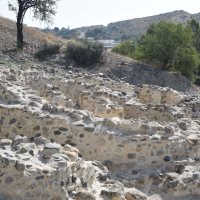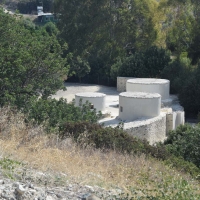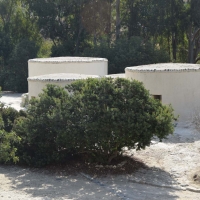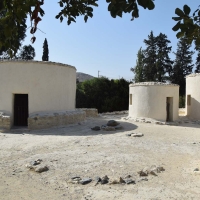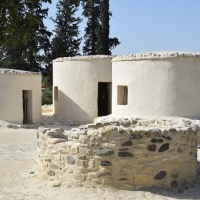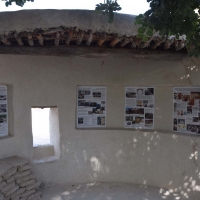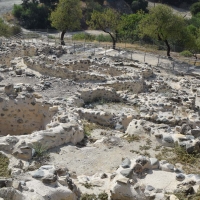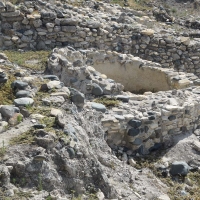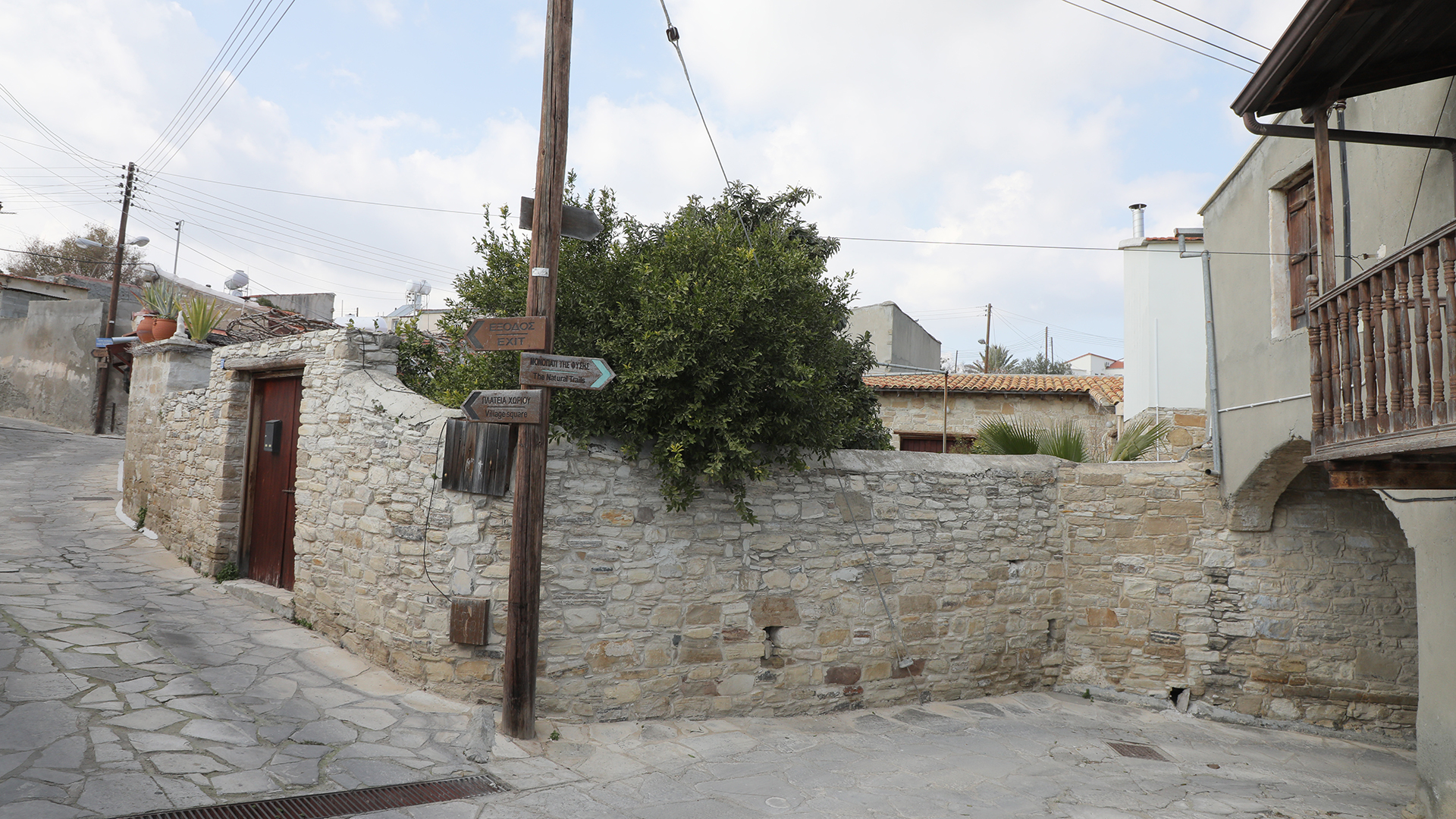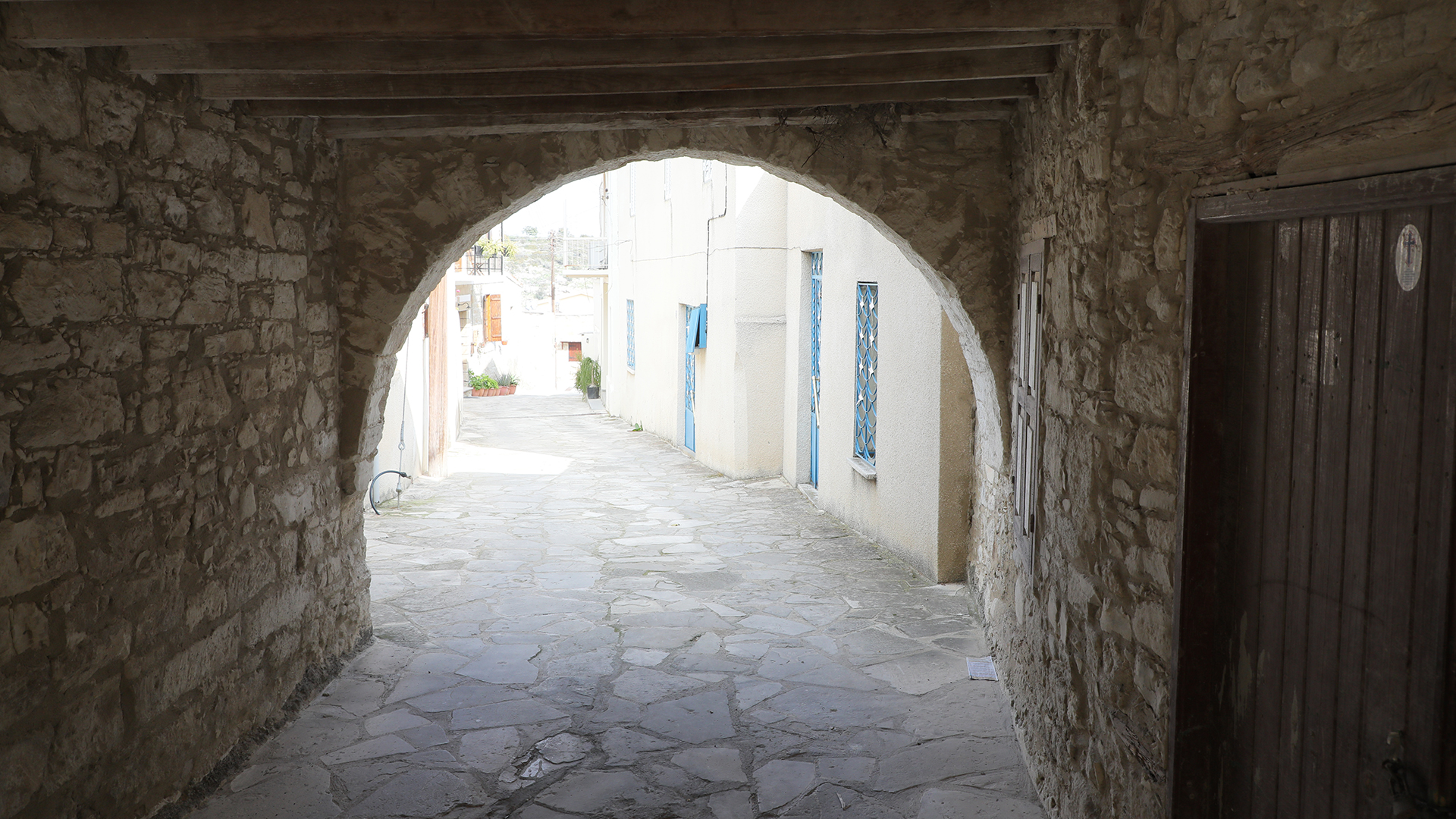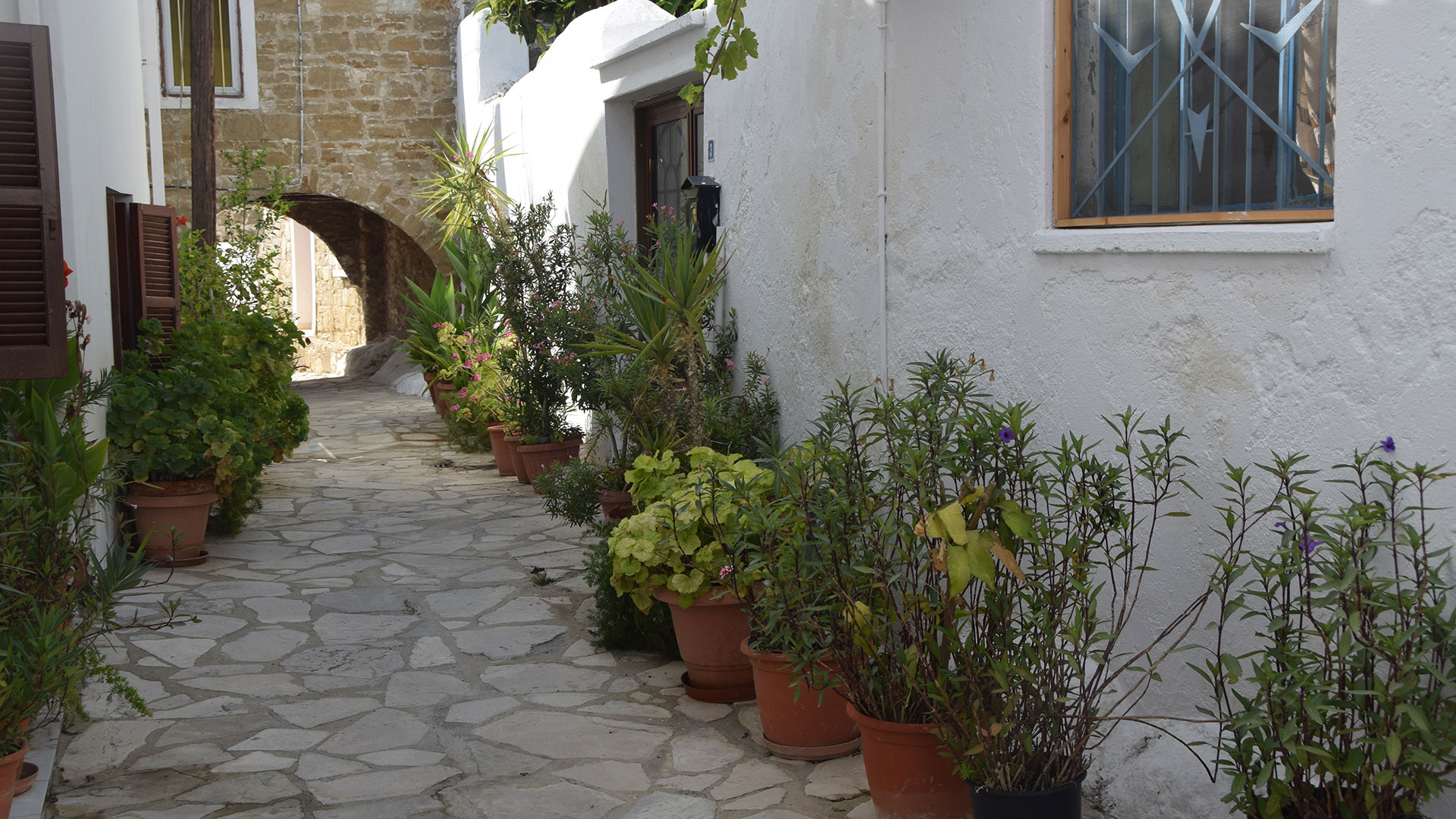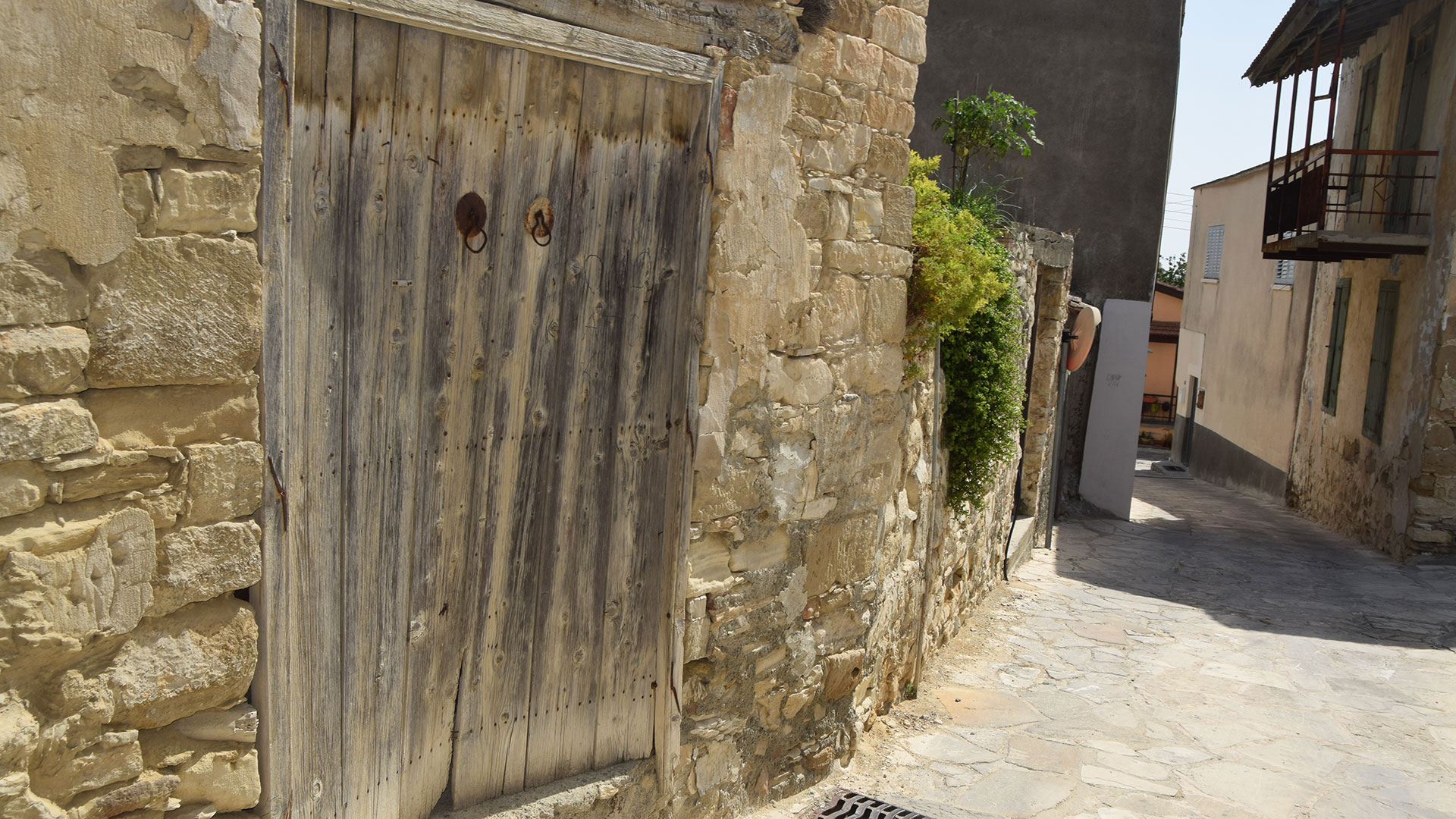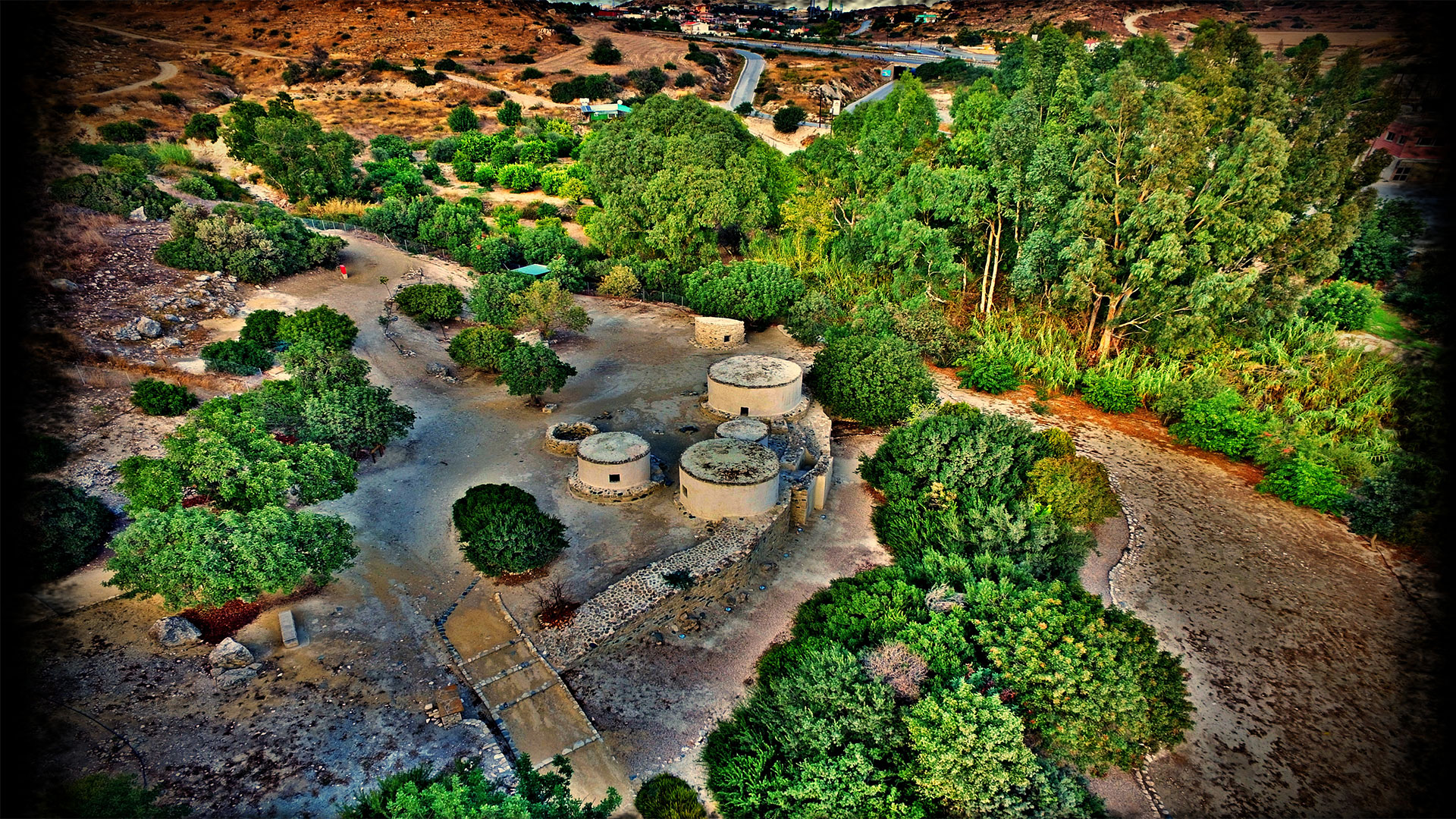The Neolithic settlement of Khirokitia is situated in the valley of Saint Minas’s River, at the foothills of Toodos. The settlement stands at a distance of only six kilometers from the sea.
The settlement came to light in 1934 by archeologist Porphyros Dikaios, who was assigned the responsibility for the excavations by the Antiquity Department for ten years, explicitly from 1936 to 1946. The next excavations took place during 1972, 1976 and 1977.
A narrow and long stone construction of 185 meters runs across the settlement. It was discovered by Porphyros Dikaios and was considered as “the main road of the settlement”. In other words, the settlement “was set along a long road”. Several researchers hold that this particular construction comprises the wall of the settlement.
The houses
The settlement of Khirokitia is thought to be one of the most representatives for the Neolithic era. The houses are cyclical with an external diameter of between 2.30 and 9.20 meters and internal diameter of between 1.40 and 4.80 meters.
The houses were built with stone at their basis, while the upper part was built with adobe and mud. The roofs were created with branches and straws covered in mud. There was “a fireplace, a kind of grate and a foramen that helped the smoke come out” at the centre of the house.
Most of the Neolithic houses had an entresol, which was probably used as a store room. What is more, it seems that the houses were built in such a way so as to be protected by floods as elevated thresholds were built.
It seems that the interior of the houses were decorated with murals. However, the bad condition of these murals does not allow researchers to investigate and conclude whether “these decorative drawings were geometrical designs or depictions”.
Entombment Customs
The dead were entombed in dug pits in the house. The pit was filled with earth and covered with mud, thus restoring the floor of the house. The graves were individual and the dead were placed with their bodies recumbent usually towards the rights side. The posture of the body is timid and as some researchers note, the extent of timidity depended on the age of the dead person.
Several objects were placed in the grave according to the sex of the dead person. In the tombs of women and men, broken stone pots were usually placed. Another entombment custom was the placement of a stone, refined or unrefined, on the body. They considered that in this way, they prevented the return of the dead to the world of the living.
Everyday objects
Tools
The inhabitants of Khirokitia used to create their own tools made of firestone, limestone, diabase and animal bones. The tools were used to search for food and alter other objects. To be more specific, tools for cereal harvesting, straw cutting, for wood processing and for scratching fresh leather were discovered. The majority of bone made tools was used for altering other objects, such as thin threads for sewing and conservation tools.
Grinding utensils
Mills, hammers and some rammers were found.
Pots
Without any doubt, many pots made of corruptible materials such as wood, straws and leather were created in Khirokitia. It seems that the inhabitants of Khirokitia produced much stone pottery, such as trays, pots, bowls and spoons. This pottery is mostly decorated with “bolections” of geometrical designs. Only one is decorated with the depiction of a human figure.
Jewelry
Jewelry such as necklaces was created using different kinds of stones.
Figurines
The human figure is the main theme of the figurines discovered at the Neolithic settlement of Khirokitia. All figurines, with only one exception of a depicted head on argil, were depicted on stone.
“Miscellaneous” objects
Pointed rings: it concerns two open rings, with a sharp edge forming a question mark or two points that are similar to two question marks facing each other.
Pebbles
Pebbles of balsate decorated with a complex of engraved lines on one or both sides.
Activities
The main activities for the inhabitants of Khirokitia were farming and stock raising, since the location of the settlement did not help them acquire many sea food. However, they used “advanced methods of fishing, such as nets or fishing lines with powerful hooks”. This is indicated by the fact that they fished big fishes such as mullets and many similar fishes.
Farming was mostly based on cereal, legume and lentil cultivation. The inhabitants of Khirokitia enhanced their diet with nuts they collected from wild trees, such as peanuts, figs, olives and prunes.
What is more, the inhabitants raised in places just right outside of the settlement sheep, goats and pigs.
Finally, they hunted deers but we do not know how exactly. No arrows were discovered, and that is why it is estimated that their weapons were “basic”, for instance “wooden spears with fire hardened spearheads and traps”.
Sources:
Alain Le Brun, Neolithic Khirokitia, Cultural Foundation of the Bank of Cyprus, Nicosia 1996
History of Cyprus, Program Development Service, Nicosia 1999

